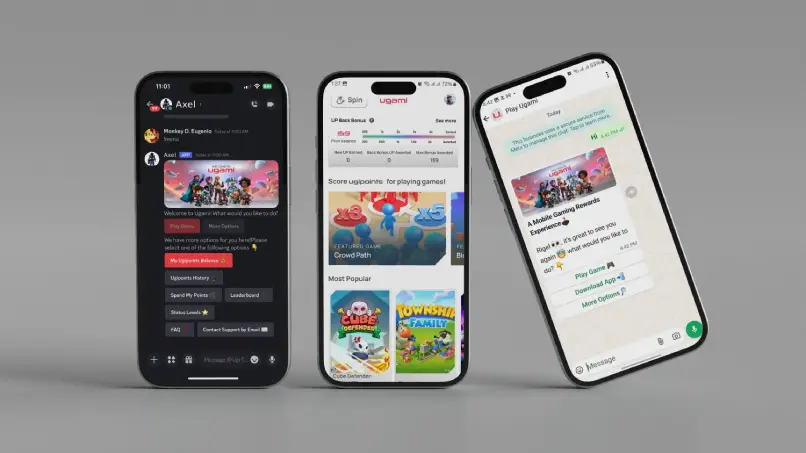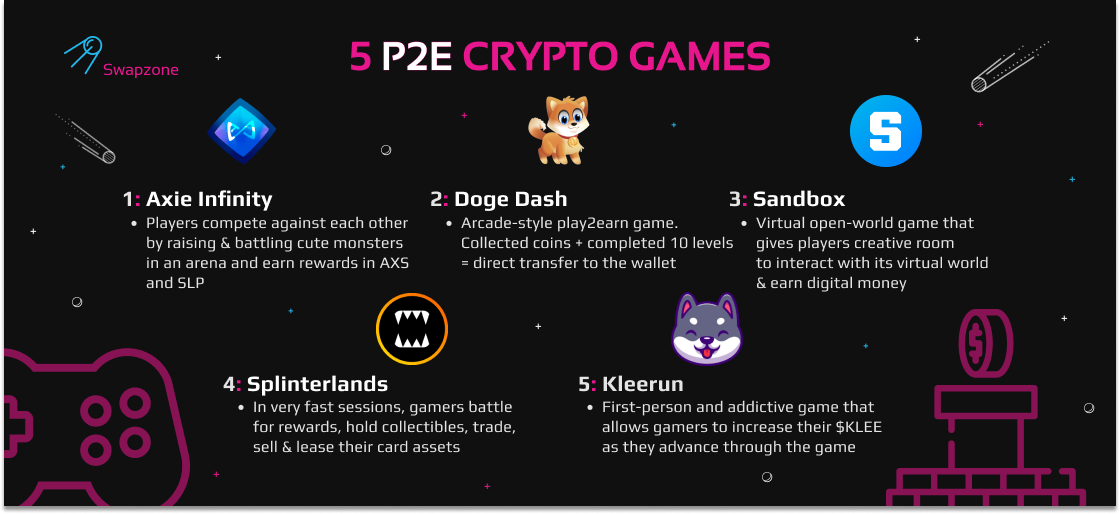Why Play-to-Earn Incentives Are Changing the Method You Play and Earn
The appearance of play-to-earn designs represents a notable change in the pc gaming landscape, inviting gamers to check out not just the enjoyment value of video games however also their prospective as income-generating platforms. This paradigm supplies diverse advantages, consisting of property ownership through blockchain innovation, which fundamentally changes player involvement and investment. As this design progresses, it presents a special collection of challenges that might influence its sustainability and appeal. Recognizing these dynamics raises significant questions regarding the future of pc gaming and the effects for both players and designers alike.
Emergence of Play-to-Earn Designs
In recent times, the video gaming market has experienced a significant change with the development of play-to-earn designs, essentially changing how players involve with electronic atmospheres. This ingenious technique enables players to get substantial incentives with their in-game activities, creating a shift from typical pc gaming standards where satisfaction and competitors were the main motivations.
Play-to-earn versions utilize blockchain innovation and non-fungible symbols (NFTs) to offer players with possession of in-game possessions, which can be traded or marketed for real-world money. Because of this, gamers are incentivized to spend effort and time into games, promoting a feeling of company and monetary possibility. play to earn rewards. This shift has actually drawn in a diverse gamer base, including those that may have previously watched video gaming as a purely recreational task
Several systems have actually emerged, showcasing successful implementations of this design, such as Axie Infinity and Decentraland. These platforms have not just produced substantial earnings however additionally sparked conversations around the sustainability and principles of such economic systems. As play-to-earn designs continue to advance, they guarantee to redefine the connection in between players, programmers, and the broader electronic economic climate, paving the means for a new period in gaming.
Advantages for Gamers
As gamers engage with play-to-earn versions, they unlock a series of advantages that prolong past simple home entertainment. One of one of the most significant benefits is the potential for financial benefits. Unlike traditional video gaming, where gamers invest time and cash without substantial returns, play-to-earn systems enable players to earn copyright or in-game possessions that can be transformed to real-world value. This economic reward not only boosts interaction yet also promotes a feeling of possession over the gaming experience.
Additionally, play-to-earn versions advertise area structure amongst players. Gamers frequently team up to attain common objectives, consequently cultivating social connections that enhance the total experience. This feeling of neighborhood can result in cooperative gameplay, where players share strategies and sources, improving both personal and group achievements.
In addition, these versions can equalize access to video gaming by allowing gamers from varied economic histories to benefit monetarily. By taking part in play-to-earn ecosystems, people can get skills and understanding concerning blockchain discover this info here modern technology, more expanding their career possibilities in the expanding electronic economic climate. Ultimately, the advantages for gamers extend well past gameplay, influencing their social, financial, and academic landscapes positively.
Obstacles in the Community
While the play-to-earn community offers significant possibilities, it is not without its difficulties. One major worry is the volatility of in-game currencies and properties, which can result in uncertain incomes for gamers. Changes in worth can prevent possible players that seek secure earnings streams - play to earn rewards. In addition, the complexities of blockchain modern technology may puzzle users not familiar with electronic currencies, producing obstacles to entry.
One more difficulty is the threat of scams and deceitful systems that can afflict the ecosystem. Players may run into click here to find out more deceitful platforms promising high rewards however inevitably leading to monetary loss. Making sure trust fund and security is crucial for the long-lasting feasibility of play-to-earn versions.
In addition, the ecological impact of blockchain gaming can not be forgotten. The energy consumption associated with mining and deal processing increases honest inquiries about sustainability. Game developers must find a balance in between rewarding players and reducing environmental footprints.
Lastly, the regulatory landscape is still developing, presenting prospective dangers for designers and players alike. Uncertain legal structures can hinder technology visit their website and limit the development of play-to-earn ecosystems. Addressing these obstacles is vital for understanding the complete capacity of this transformative gaming standard.
The Function of Blockchain Innovation
Blockchain innovation offers as the backbone of the play-to-earn ecosystem, addressing much of the difficulties previously detailed. By using decentralized ledgers, blockchain makes certain transparency and security in purchases. Players can confidently earn and trade in-game properties, understanding that ownership is proven and not subject to adjustment.

Tokenization of assets plays a crucial function, granting players real ownership of their in-game things, which can be purchased, marketed, or traded on different industries. This motivates a dynamic second market, where players can monetize their abilities and time invested in the game.
In addition, blockchain modern technology makes it possible for interoperability between different video games and platforms, enabling gamers to bring their assets across numerous communities. This adaptability not just enhances individual experience however likewise advertises a much more inclusive gaming environment, eventually improving the landscape of video gaming and earning.
Future Patterns in Gaming
The video gaming sector is on the brink of a transformative development, driven by emerging innovations and shifting gamer assumptions. As play-to-earn versions gain grip, players are progressively looking for immersive experiences that mix home entertainment with substantial incentives. This change is prompting developers to innovate, concentrating on producing interesting gameplay that cultivates area and interaction.
One remarkable pattern is the integration of digital reality (VR) and augmented truth (AR), boosting the video gaming experience by giving much deeper immersion and interactive settings. In addition, advancements in man-made intelligence are making it possible for much more innovative non-player characters (NPCs) and adaptive gameplay, tailoring experiences to individual player preferences.

Conclusion
To conclude, the play-to-earn model is considerably changing the video gaming landscape by making it possible for players to derive real-world worth from their in-game activities. This standard change not just improves player involvement and financial investment but also elevates obstacles that need to be addressed to guarantee sustainability within the community. As blockchain technology remains to promote possession of digital properties, the future of video gaming guarantees further advancement and possibilities for players across diverse histories.